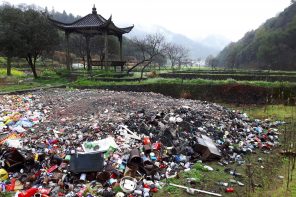On June 15, the House of Commons Standing Committee on Environment and Sustainable Development tabled a report reviewing the Canadian Environmental Protection Act (CEPA). Though CEPA was first established in 1988, it was last updated in 1999 – nearly twenty years ago. In a statement marking the release of the report, Committee Chair Deborah Schulte remarked: “The Act has now been in place for almost three decades. It is time to bring it into the 21st century by taking into account new scientific knowledge and evolving concepts in environmental law.”
The Bull & Bear recently sat down with Will Amos, MP for Pontiac and member of the Committee, to discuss the report and the future of CEPA.
Established in 1988, it is likely that many, if not most Canadians are unaware of CEPA or its contents. Yet the Act is a major part of Canada’s environmental legislation, for which the Committee has put forth 87 recommendations.
Our scientific understanding of toxic chemicals and their impact on the environment and human health has evolved.
While CEPA is supposed to be reviewed every five years, it has only been reviewed twice since 1999: once by the Committee in 2007 and once by a Senate Committee in 2008. It is not that no recommendations for the Act have been made, but rather that none have been implemented. “The Harper administration determined that no reforms were to be made,” Amos explained.
The report’s contents reflect this near-twenty year stasis, with its number of recommendations totalling at 87. Indeed, while CEPA may have been at a standstill, the environmental reality was not. Amos notes: “In the past twenty years a lot has changed. Our scientific understanding of toxic chemicals and their impact on the environment and human health has evolved.”
Tim Gray, Executive Director of Environmental Defence shares this sentiment: “Canada’s laws are now significantly weaker than those in Europe and the U.S. when it comes to regulating toxic chemicals. The report’s recommendations provide a strong foundation to finally ensure strong protections of human health and ecosystems.” The figures agree: according to the Conference Board of Canada, Canada ranks 14th among 16 peer countries in environmental performance.
Canadians are already feeling the brunt of weak environmental legislation in terms of health: it is estimated that at least 15,000 Canadians a year die prematurely due to exposure to environmental hazards such as pollutants and toxic chemicals. These pollutants affect the economy as well: a recent study by the International Institute of Sustainable Development shows pollution costs Canada more than $39 billion annually.
While this would come to $4,300 for each Canadian family, in reality, the cost is far from equal. On this, Amos contends, “The burden of pollution is not borne equally among all Canadians. Specific disadvantaged groups or vulnerable groups, whether they’re low-income Canadians, or pregnant women, or indigenous communities, are often at a disadvantage and are unduly affected […] by contamination, in the form of air or water contamination, or exposure to certain everyday products.”
At least 15,000 Canadians a year die prematurely due to exposure to environmental hazards such as pollutants and toxic chemicals.
According to Amos, the 87 recommendations included in this report provide an opportunity to improve the lives of these and all Canadians, as well as our environmental standing: “The health implications are a number one issue, a top priority. They know that the strength of our regulatory regime around toxic chemicals is crucial to ensuring not only the protection of our environment but the protection of our children and our families.”
Despite the simple goal, the report’s eighty-plus recommendations cover immense ground influenced by over fifty sources, including industry experts, academics, and members of affected communities.
While the report focuses on pollution and toxic materials, it does not capture all environmental risks, such as pipelines and hydrofracking. The subjects that CEPA does address, however, are just as significant considering how little of their risk Canadians know.
According to the International Institute for Sustainable Development (IISD), “various studies have assessed the costs of specific pollutants […] but no single study covers them all.” In the case of many pollutants, the IISD states that “no cost information is available at all.”
Improving public knowledge and participation on the topic of toxic chemicals comprises a central component of the report. According to Amos, “this information is data which should be made available online and any given community should be able to search with their postal code what releases of chemicals are being made.”
Improving this database is a strong step towards improving public participation, which Amos considers key to the efficacy of CEPA. “I think that there are measures that can be taken to enable enhanced public participation in chemical management” he explains. “That’s one aspect of participation because information is crucial to inform public participation.”
The report’s eighty-plus recommendations cover immense ground influenced by over fifty sources, including industry experts, academics, and members of affected communities.
Despite addressing these concerns, criticism on the report has emerged. Though 56 witnesses were interviewed during Committee hearings, the Conservative Party’s Opposition Report suggests that “the majority of recommendations are derived from four principle sources”, an assertion Amos protests: “We heard from dozens and dozens of witnesses, we made over eighty recommendations. A cursory glance at the report will demonstrate the depth and the breadth of support across the recommendations for a number of reforms.”
There was concern from the other side of the aisle as well. In their supplementary report, the NDP stated that they “strongly oppose the recommendation to consider business and trade interests as a factor in any decisions to manage, control or prohibit toxins” which they maintain “contradicts the primary purpose of CEPA,” namely, ‘to contribute to sustainable development through pollution prevention’ as the ‘priority approach to environmental protection.’
Nevertheless, environmental and health groups are already celebrating the report and applauding its recommendations. In a June 15 press release, Peter Wood of the David Suzuki Foundation maintained: “These recommendations, if implemented, could have major tangible benefits for the health and well-being of all Canadians, and ultimately save lives.” Likewise, Ecojustice’s Dr. Elaine MacDonald and Kaitlyn Mitchell claim that the report is “a once-in-a-generation opportunity to dramatically improve our most important environmental law.”
For his part, Amos seems confident in the report. “I’m optimistic that the Ministers of Health and Environment will take care to assess what’s being proposed and discuss with their department officials the implications of each recommendation. There will be some recommendations that they say ‘you know what, that looks like it’s in the public interest and it looks like we can make a strong case for moving ahead’.”
When asked why he believes this report is so significant, again Amos is confident. “I think to the average Canadian it’s obvious: they want their clean air, their clean water, and they trust the government to protect them and want to make sure that the primary law that protects our communities from toxic substances is strong as it can be.”
With the report tabled, it will be examined first by the Minister of the Environment and Climate Change, followed by the Cabinet. The government has 120 days to publish a response that addresses the Committee’s report and decides whether to give CEPA a long-awaited update.








